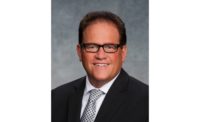How the Industry Can Prevent Hostile Vehicle Incidents Post-Waukesha

On Sunday, Nov. 21, a man in a red SUV intentionally drove through barricades into a crowd attending a Christmas parade in Waukesha, Wis., leaving six people — including an 8-year-old boy — dead. Sixty people, including 18 children, were injured.
According to Rob Reiter, chair of the Security Industry Association (SIA) Perimeter Security Subcommitee, it’s an incident the public has encountered before.
“We’ve had four killed and almost 40 injured at a homecoming parade in Stillwater, Okla.; we had almost 30 people injured at an accident in New Orleans at Mardi Gras. In New York City, we had one killed and a number injured as an angry driver was driving down the sidewalk in Times Square trying to kill as many people as he could. We also had Charlottesville, Va., where somebody drove into a demonstration and killed one young lady and injured a couple dozen.”
One recommendation after a Santa Monica tragedy in 2003 that left 10 people dead and over 70 hospitalized by an impaired driver at a farmer’s market came from the National Transportation Safety Board (NTSB). The NTSB recommended that, when street closing results in large crowds, a city should consider the use of effective barriers to protect pedestrians and participants. Just as in Santa Monica, Waukesha, Wis., had only plastic sawhorses to define its parade route. Despite the recommendation from the NTSB, and seeing repeated tragedies in the headlines, hostile vehicle incidents continue.
“There’s been a substantial increase in the use of vehicles as weapons, both by terrorists, by angry people, and by people that, quite frankly, we don’t know if they had any motive at all,” Reiter says.
How can the industry help to prevent further tragedies like Waukesha? According to Reiter, the $1.3 trillion infrastructure bill provides a start to this by providing funding for thorough safety and security planning and the purchase and implementation of barriers.
“I can’t think of a better use for infrastructure than making sure that cities have a safe place to do whatever it is that cities do,” he says.
The return on investment for these reusable structures is great, according to Reiter.
“You could have protected the backside of that parade for about $20,000,” he says. “If you amortize that over 10 years, that’s $2,000 a year, which is probably less than the revenue from the parking meters.”
Additionally, bollards — short, thick posts seen along sidewalks and public areas that prevent cars from entering a space — combine aesthetics and security. According to Reiter, defining and implementing rigid barrier systems — not bike racks, police cars turned sideways, or a smattering of orange cones — are the solution to protecting people in public spaces.
Crowds pay a price for shoddy barriers. They assume that, if the police have a presence on scene or there are traffic cones set up, the area is safe from accidental or deliberate vehicle incursions.
“The presumption of personal safety is a well-known thing in public areas,” Reiter says.
Investing in rigid structures can prevent lawsuits in the millions — more than the cost of purchasing or renting the rigid barriers themselves — and can stop many more preventable tragedies from happening in the future.
“If you were told in 2004 … [the] proper procedures to have a traffic plan and rigid barriers, and if you didn’t do it the year after, well, okay, that’s fine,” Reiter says. “But if you didn’t do it after there were five high-profile national news events, a body count in the dozens and injuries in the hundreds — just in this country — then this has been a foreseeable event which you failed to prevent.”
For more information on perimeter security, visit the SIA Perimeter Security Subcommittee page.
Looking for a reprint of this article?
From high-res PDFs to custom plaques, order your copy today!





